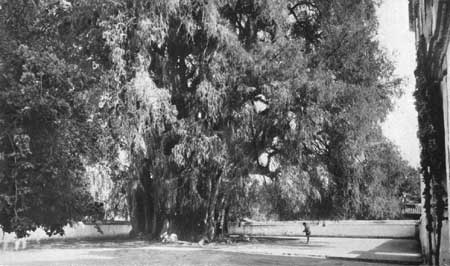|
The Redwoods of Coast and Sierra
|

|
|
APPENDIX I: THE REDWOOD FAMILY THE REDWOOD FAMILY, Taxodiaceae, is characterized by ancient lineage, peculiar modern distribution, and the isolation of various members. The various genera which compose the family are widely scattered about the earth and are mostly very restricted in habitat. It is worth noting, because of great historical significance, that no genus occurs in more than one continent. The family includes shrubs and trees which are members of the class of plants known as Gymnosperms. There are seven different genera, each with from one to three species, including a total of thirteen species. The larger trees are found in the first three groups mentioned below. Trees included in the first five groups are cultivated in California. 1. REDWOOD (Sequoia). Only two living species, the Coast Redwood (Sequoia sempervirens) and the Sierra Redwood (Sequoia gigantea) of western North America. 2. BALD CYPRESS (Taxodium). Two species, the Bald Cypress (Taxodium distichum), of the southeastern United States, and the Mexican Cypress (Taxodium mucronatum), of Mexico. Taxodium distichum was widely distributed over the Northern Hemisphere during the Oligocene and Pliocene periods, and at least one other Taxodium species now extinct lived during the Tertiary in northern lands and followed the Arctic Circle around the earth. These trees are not true cypresses, like the Monterey Cypress and others which belong to the genus Cupressus, which is classified in the Cypress Family. 3. JAPANESE CEDAR (Cryptomeria japonica). One species, native to Japan and China. The foliage resembles that of Sequoia gigantea, and the cones resemble those of Sequoia sempervirens. The trees are often mistaken, as they grow in gardens, for Sequoia gigantea. 4. UMBRELLA PINE (Sciadopitys verticellata). One species, native to Japan. It is grown as an ornamental for its handsome foliage and regular pyramidal habit. 5. Cunninghamia sinensis. One species, native to Japan and China. The trees grow up to 80 feet in height. 6. Taiwania cupressoides. Native to the island of Formosa. It is the closest relative of the Sequoia. 7. ARTHEOTAXIS. Three species, native to Tasmania and the island of Victoria. The trees grow up to forty-five feet in height. 8. GLYPTOSTROBUS. Two species, in China. They grow in swamps and lowlands, and although they are only shrubs or small trees up to ten feet tall, they are closely related to Taxodium. Like Sequoia, the genus is ancient geologically.
|
| <<< PREVIOUS | CONTENTS | NEXT >>> |
The Redwoods of Coast and Sierra ©1940, University of California Press shirley/app1.htm — 02-Feb-2007 | ||
